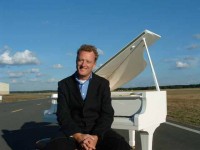Lennon/McCartney
From a standing start, knowing only a handful of chords between them, John Lennon and Paul McCartney turned themselves into the most influential composers of the late twentieth century. Their music wasn’t just immensely popular. It also proved that traditional western harmony – the main building block of European music – still had plenty to offer. (Even though avant-garde composers had turned their back on it.) By mixing pop and classical techniques, and cross-fertilising them with Indian, and electronic music, The Beatles refreshed and revitalised western harmony. They also transformed the recording studio from a dull box where you recaptured your live sound, into a musical laboratory, of exciting and completely new sounds. This was one of the most crucial advances in the way popular music was to be produced. But Lennon & McCartney didn’t just influence all popular music that followed them. They influenced classical music too. The leading classical composers of our own era have turned back to traditional harmony. More than anyone, Lennon & McCartney prefigured this trend. They showed that the old musical forms could be refashioned and refreshed, to make music that was both exciting and popular, and sophisticated and new. They, more than anyone, saved the western musical tradition from extinction, and gave it a new purpose and a direction. Not bad going for two boys who met at a local church fete and taught themselves their instruments.
Directed by Francis Hanly, Produced by David Jeffcock
[List of contributing musicians to this programme: Titles music written and performed by Howard Goodall, with the Purcell School String Quartet (Soojin Han, Sophie Lockett, Daniel Palmizio, Colin Alexander); Boulez piano sonata played by Lawon Lee from the Purcell School; Handel, Mozart, Brahms and Philip Glass excerpts played by students of The Royal Academy of Music; Bach Double Violin Concerto played by students of The Lady Eleanor Holles School.]
